In this article
Understanding Mixing
When you ask what mixing is, you step into the world of audio production. Mixing means combining different recorded sounds, like vocals and instruments, into one final track. You adjust each sound so everything fits together. This process helps you create music that sounds clear and balanced. Mixing lets you control the volume, tone, and space of every part. You make sure listeners hear every element just as you want them to.
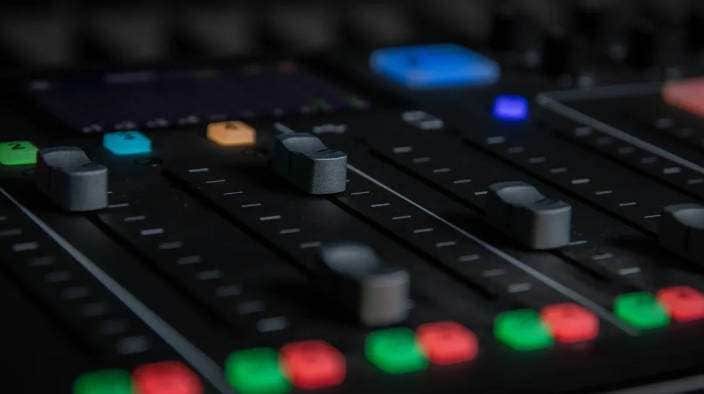
Mixing in audio production means making sure all instruments and vocals in a song sound good together. You use a Digital Audio Workstation (DAW) and special tools called plugins to do this job. Mixing is not just about turning up or down the volume. You also shape the sound with equalization (EQ), control how loud or soft things get with compression, and add effects like reverb or delay. The main goal is to polish the audio and make every part fit together smoothly. Leading audio engineering organizations describe mixing as the process that helps all elements in a track blend into a clear and balanced whole.
Mixing is like putting together a puzzle. Each piece, or sound, must fit perfectly with the others to create a complete picture.
Process of Mixing
You might wonder what mixing is in practice. The process follows a series of steps that help you turn raw recordings into a finished song. Here is how professional audio engineers approach mixing:
- Preparation of the session: You organize and label your audio files. This step helps you work faster and avoid mistakes.
- Volume balancing: You adjust the loudness of each track so nothing is too loud or too quiet.
- Compression: You control the dynamics, making sure no part jumps out or gets lost.
- Equalization (EQ): You shape the sound by boosting or cutting certain frequencies. This makes each instrument or vocal clear.
- Spatial placement: You use panning, reverb, and delay to place sounds in the stereo field and create depth.
- Volume automation: You change the volume of tracks at different points in the song for more excitement or clarity.
- Adding effects: You use creative effects to add character or fix problems.
- Final checks: You listen carefully to make sure everything sounds right and is ready for the next stage.
You use many tools during mixing. Level faders help you set the volume. Equalizers let you adjust the tone. Compressors keep the sound even. Reverb and delay add space and atmosphere. Automation lets you change settings over time. Panning places sounds left or right. Saturation adds warmth. Most people use DAWs like Pro Tools, Logic Pro, Ableton Live, FL Studio, or GarageBand for these tasks. These programs give you everything you need to mix music from start to finish.
Mixing has changed a lot with digital technology. You now have more control and can make changes without losing sound quality. New formats like Dolby Atmos let you place sounds all around the listener. Even with new tools, you still need to know what mixing is and how to use your skills to make music sound its best.
Purposes of Mixing
Balance
When you mix music, you want every sound to work together. Balance means making sure no instrument or vocal is too loud or too quiet. You want listeners to hear each part clearly. Industry experts say balance is one of the main goals in mixing. You use tools like EQ, compression, and effects to help each sound find its place. These tools let you control the loudness, shape the tone, and add space to your mix. Your job is to turn many sounds into one track that feels right and sounds good.
You can use different techniques to achieve balance. Here is a table that shows some common methods:
| Mixing Technique | Role in Achieving Balance |
| Gain Staging | Sets loudness levels for each sound to avoid distortion and keep things clear. |
| Compression | Controls how loud or soft parts get, so nothing jumps out or gets lost. |
| Equalization (EQ) | Shapes the tone of each sound, making space for every instrument and avoiding muddiness. |
| Panning | Places sounds left or right in the stereo field to create space and clarity. |
| Level Adjustments & Automation | Lets you change volumes over time, so each part can shine without overpowering others. |
| Reference Tracks | Helps you compare your mix to professional songs for a balanced sound. |
Tip: When you balance your mix, you help every instrument and vocal stand out without fighting for attention.
Cohesion
Cohesion means making all the parts of your song feel like they belong together. You want your mix to sound like one piece, not a bunch of separate sounds. You use special techniques to glue everything together. These include subtle EQ changes, gentle compression, and adding warmth with saturation. You can also group similar sounds and process them together. This helps your mix feel smooth and connected.
Here are some ways you can create cohesion in your mix:
| Technique | Description | Purpose/Effect |
| Subtle EQ Adjustments | Small boosts or cuts to brighten or clean up the mix. | Makes the mix clear and pleasant. |
| Glue Compression | Light compression on the whole mix or groups. | Pulls sounds together for a unified feel. |
| Saturation | Adds gentle warmth and smoothness. | Gives the mix an analog, natural sound. |
| Parallel Compression | Blends a compressed version with the original. | Adds thickness without losing punch. |
| Multi-Bus Workflows | Groups similar sounds for shared processing. | Keeps instruments from overpowering each other. |
| Reference Tracks | Compares your mix to finished songs. | Checks if your mix sounds cohesive and professional. |
When you focus on balance and cohesion, you help your music sound polished and enjoyable. These steps turn a collection of sounds into a finished track that feels complete.
Techniques of Mixing
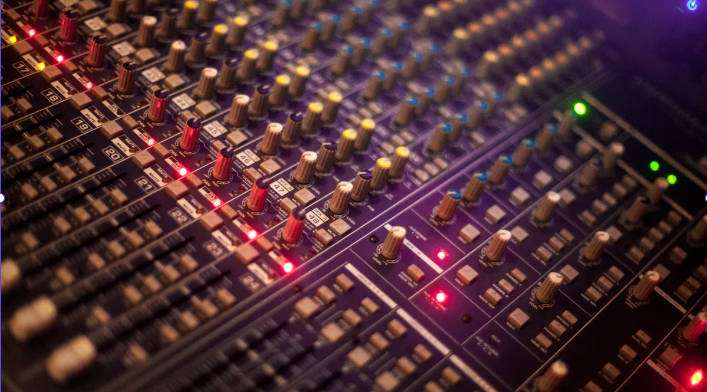
Levels
You set levels to control how loud each sound is in your mix. Think of this like adjusting the volume of each ingredient in a recipe so nothing overpowers the dish. When you balance levels, you make sure the main parts, like vocals or lead instruments, stand out. Background sounds support the song without taking over. This step helps your mix sound clear and professional on any device, from big speakers to small earbuds.
- Adjusting levels gives each track its place.
- Balanced levels prevent jarring jumps in volume.
- Good level control makes your mix sound polished.
Panning
Panning lets you place sounds left, right, or center in the stereo field. You create space by moving instruments to different spots, just like arranging players on a stage. Vocals often sit in the center, while guitars or keyboards might move to the sides. This technique helps you avoid sounds clashing and makes the mix feel wide and immersive. Checking your mix in mono ensures nothing disappears when played on single speakers.
EQ
EQ, or equalization, shapes the tone of each sound. You boost or cut certain frequencies to help instruments fit together. For example, you might cut muddy low mids on a vocal to make it clearer. EQ helps you remove unwanted noise and highlight the best parts of each sound. You use tools like spectral analyzers to spot frequency clashes and fix them, making every instrument easy to hear.
Compression
Compression controls the dynamic range, or the difference between loud and soft parts. You use it to keep vocals steady or make drums punchy. Compression can smooth out uneven levels and help instruments blend. For example, you might compress a bass guitar to keep it consistent or use lighter compression on a lead guitar to keep its expression.
Effects
Effects like reverb and delay add depth and space. Reverb makes a sound feel like it's in a room or hall. Delay creates echoes that add rhythm or widen the mix. You use these effects to make your mix feel lively and three-dimensional. Start with subtle settings to avoid muddiness.
Automation
Automation lets you program changes over time. You can make a vocal louder in the chorus or add reverb to a guitar only in certain parts. Automation helps you create excitement and keep the listener's attention. It acts like a guide, shaping the song's energy and flow.
Challenges of Mixing
Common Issues of Mixing Audio
When you start mixing, you may face many challenges. Some problems happen often, even for experienced engineers. Here are some of the most common issues you might encounter:
- Overcompression can make your mix sound flat and lifeless. You lose the natural ups and downs in the music.
- Using too many effects can make the mix too wide or weak in the center. Important sounds, like vocals, may get lost.
- Poor recording quality or bad tracking creates problems that are hard to fix later.
- Too much processing can lead to an imbalanced or muddy mix.
- Spectral imbalances happen when some instruments are much louder than others, like drums overpowering vocals.
- Mixing at high volumes causes ear fatigue. You may make poor decisions because your ears get tired.
- Overusing EQ in an untreated room can make your mix sound unbalanced.
- Not using automation leads to a static mix that lacks excitement.
You may also run into technical issues, such as cables not plugged in all the way, monitors turned off, or bad cables causing static. Sometimes, you get no sound from a channel because of signal flow problems. Always check your setup before you start mixing.
Good Mix Qualities
A professional-sounding mix stands out because it feels clear, balanced, and engaging. You can spot a good mix by looking for these qualities:
- Every instrument and vocal sits well in the mix. Nothing is too loud or too quiet.
- The mix has space and depth. You hear sounds from left to right and front to back.
- EQ and compression are used with care. Each sound is clear, and nothing clashes.
- Effects like reverb and delay add depth without making the mix muddy.
- Automation brings the song to life. Volume and effects change to match the energy of the music.
- The mix sounds good on any system, from headphones to car speakers.
Professional mixes also come from good habits. You should organize your session, test your mix on different speakers, and ask for feedback. Using high-quality equipment and working in a treated room helps you hear details better. When you follow these steps, your mixes will sound polished and ready for release.
Mixing vs. Mastering
Differences Between Mixing and Mastering
You might wonder what sets mixing and mastering apart. Mixing and mastering are two separate steps in audio production. Each one has a unique role and focus.
Mixing happens first. You work with many tracks, such as vocals, drums, guitars, and synths. You balance these tracks, shape their sound, and use effects to create a song that feels complete. Mixing lets you decide how each part fits together. You use tools like EQ, compression, panning, and reverb. This stage is creative and shapes the emotional feel of your music.
Mastering comes after mixing. You work with just one stereo track—the finished mix. Your goal is to make sure the song sounds good on all speakers and devices. Mastering involves subtle changes, like small EQ tweaks, compression, and limiting. You also add metadata and check for any problems. Mastering helps your song fit well with other tracks on an album.
Here is a table to help you see the main differences:
| Aspect | Mixing | Mastering |
| Purpose | Balance and creatively shape individual tracks into a cohesive song. | Final quality control of the stereo mix to ensure consistency and playback compatibility. |
| Focus | Individual tracks (vocals, drums, bass, guitars, synths) | Single stereo track |
| Tools | EQ, compression, panning, reverb, delay, effects on individual tracks | Subtle EQ, compression, limiting, metadata embedding, and final quality checks |
| Creative Scope | Highly creative, shapes the song's identity | Subtle, focuses on consistency and translation across playback systems |
Sequence
You always mix before you master. Mixing comes first because you need to balance and shape each track. Once you finish mixing, you export the song as a single stereo file. Then, you move to mastering.
During mastering, you listen in a controlled room with special speakers. You make small changes to polish the sound. You also prepare the song for streaming, CDs, or vinyl. Mastering ensures your song matches the loudness and quality of other songs in an album or playlist.
Professional audio engineers often work together during these stages. Mixing engineers focus on the details of each song. Mastering engineers make sure all songs sound consistent as a group. Good communication and trust between these roles help you achieve the best results.
Tip: Think of mixing as cooking each ingredient to perfection. Mastering is like plating the meal so it looks and tastes great at the table.
You now know what is mixing and why it matters in music and audio production. Mixing brings all sounds together into a clear, balanced track. Key skills include adjusting levels, using EQ, adding compression, and applying reverb. Learning these basics helps you create music that sounds professional and vibrant.
- Start by listening to reference tracks and practicing with your own mixes.
- Use simple tools and take breaks to protect your ears.
- Seek feedback and explore new genres to grow your skills.
| Resource Type | Example Resource |
| Book | "The Mixing Engineers Handbook" by Bobby Owsinski |
| Online Course | MIXXIN Academy |
| Website | The Pro Audio Files |
Mixing takes practice. Most beginners learn the basics in a few weeks, but steady progress leads to great results.
How to Mix Audio?
If you are looking for a tool to mix audio, try using the powerful editor Filmora. Before you start the process, make sure that you have downloaded and installed Filmora on your computer. Then follow the simple steps below.
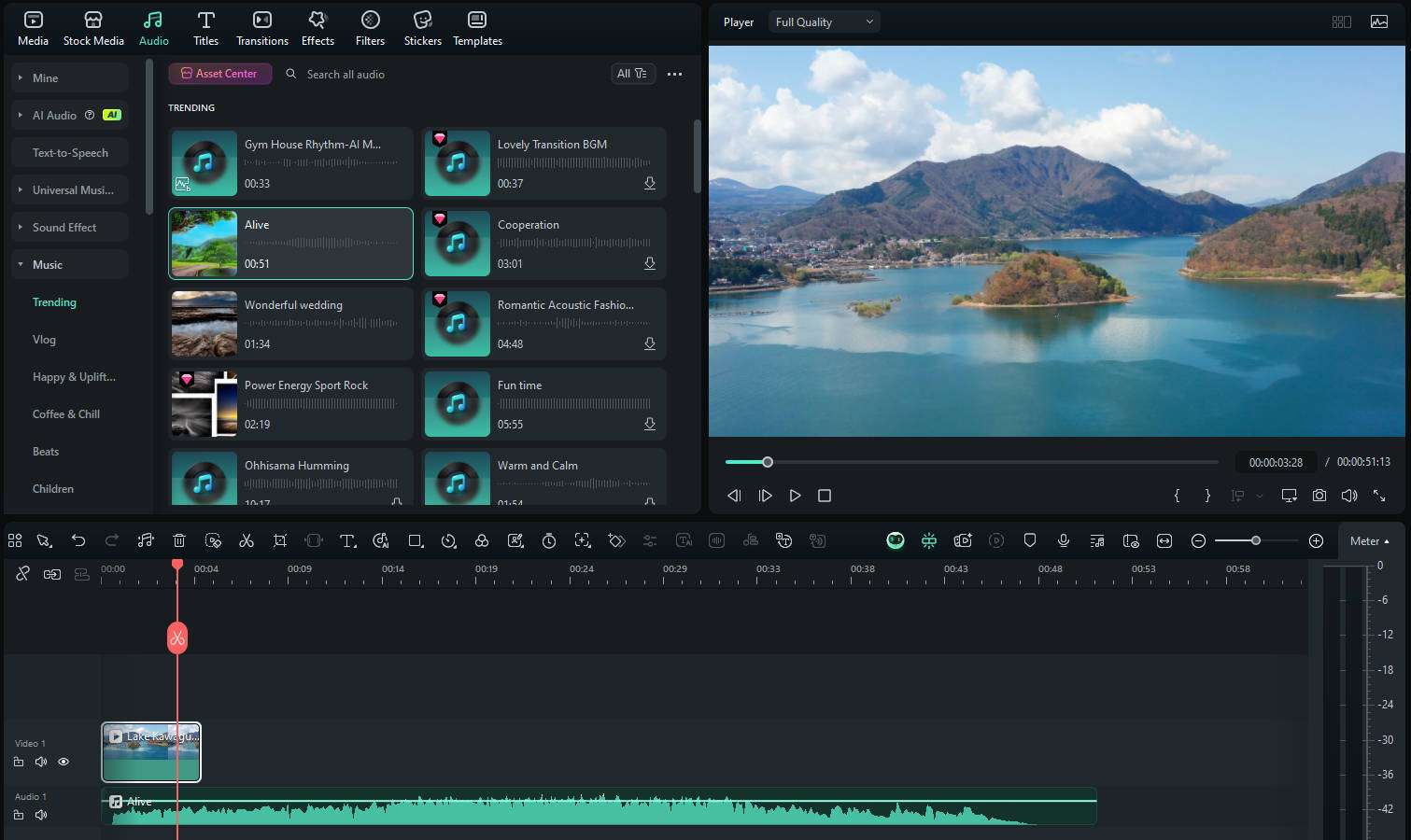
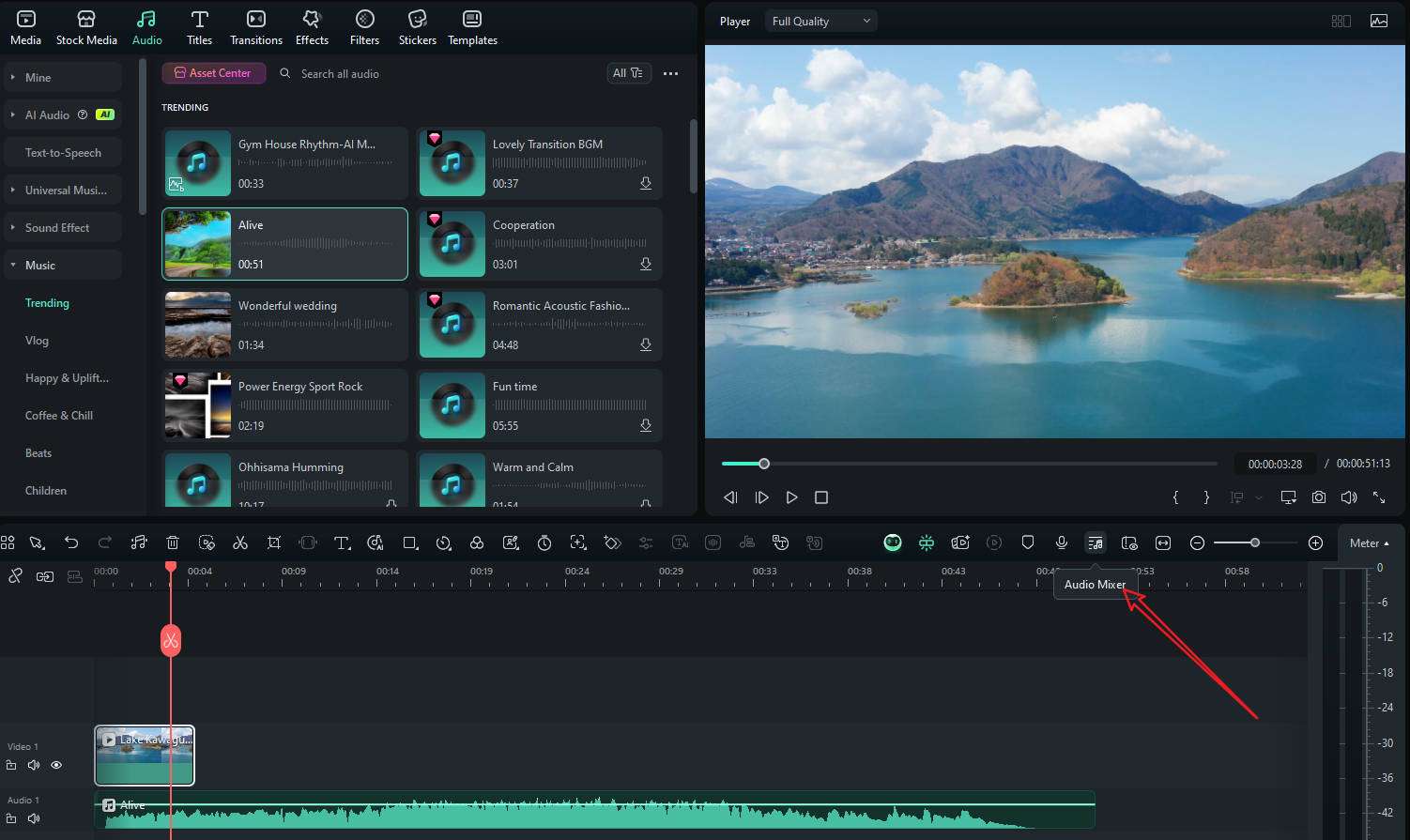
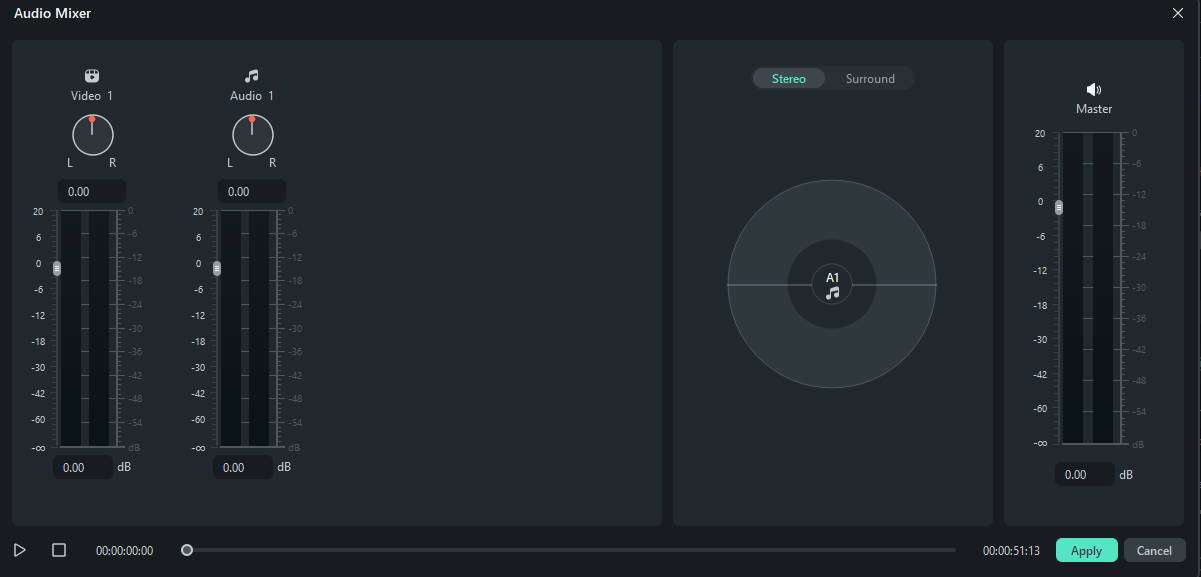
Here is a full video tutorial on mixing audio with Filmora.
FAQs
-
What does a mixing engineer do?
A mixing engineer takes your recorded tracks and shapes them into a finished song. You get balanced levels, clear sounds, and effects that fit the music. The engineer uses tools like EQ, compression, and reverb to help your song sound its best. -
What equipment do you need for mixing?
You need a computer, a Digital Audio Workstation (DAW), headphones or studio monitors, and an audio interface. You can also use plugins for EQ, compression, and effects. Many people start with basic gear and upgrade as they learn. -
What makes a mix sound professional?
A professional mix sounds clear, balanced, and exciting. You hear every instrument and vocal without anything getting lost. The mix works on any speaker or headphones. You use good level control, EQ, and effects to create a polished sound. -
What is the difference between mixing and editing?
Mixing shapes the sound of your tracks and blends them together. Editing means you cut, move, or fix parts of the recording. You edit first to clean up mistakes, then you mix to make the song sound great. -
What should you listen for when checking your mix?
You should listen for clear vocals, balanced instruments, and no unwanted noise. Check if the mix sounds good on different speakers. Make sure nothing is too loud or too quiet. Use reference tracks to compare your mix to professional songs.




